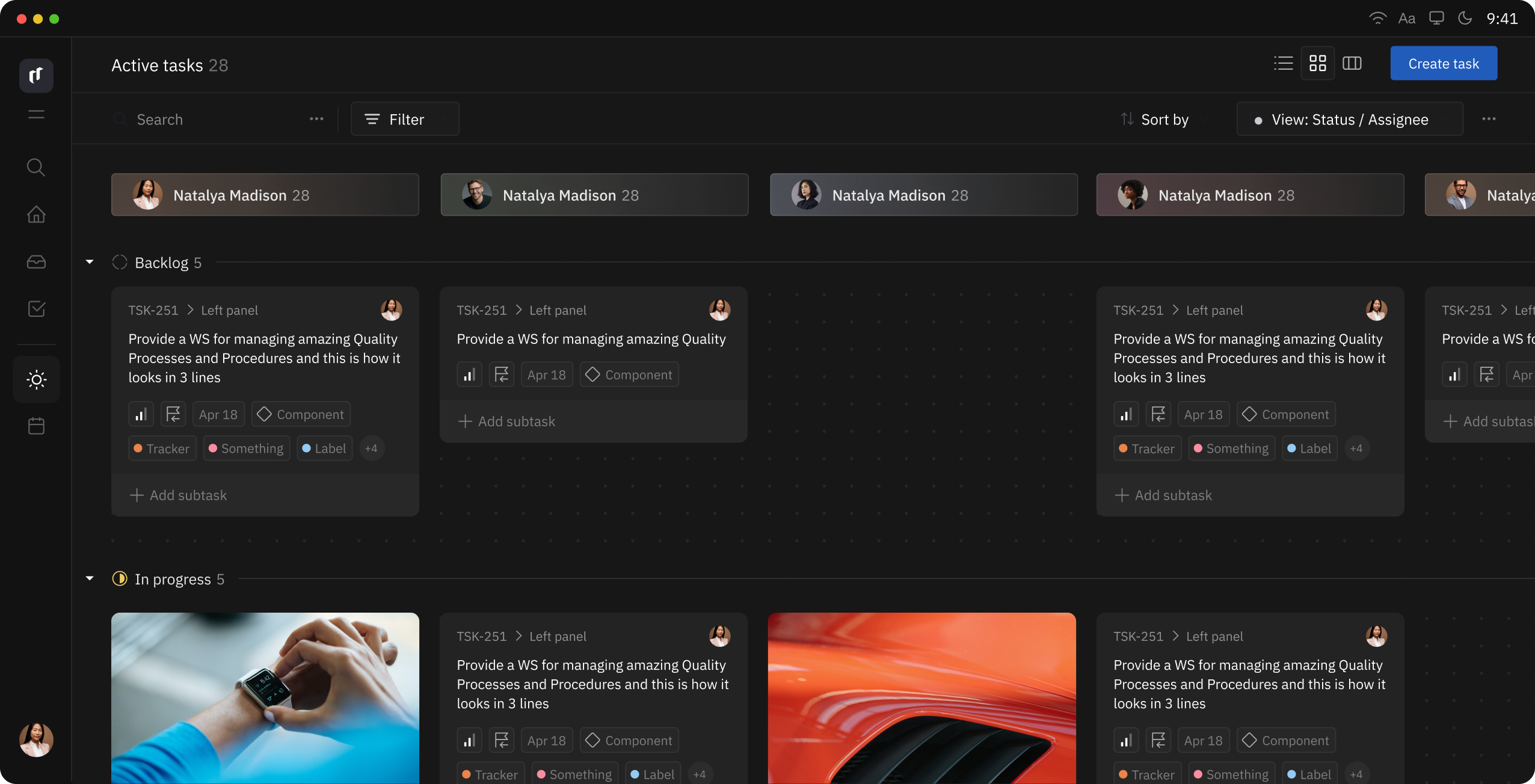⭐️ Your star shines on us. Star us on GitHub!
The Huly Platform is a robust framework designed to accelerate the development of business applications, such as CRM systems. This repository includes several applications, such as Chat, Project Management, CRM, HRM, and ATS. Various teams are building products on top of the Platform, including Huly and TraceX.
If you're primarily interested in self-hosting Huly without the intention to modify or contribute to its development, please use huly-selfhost.
This project offers a convenient method to host Huly using docker, designed for ease of use and quick setup. Explore this option to effortlessly enjoy Huly on your own server.
- Pre-requisites
- Fast start
- Installation
- Build and run
- Development mode
- Make sure you have the following installed on your system:
- Node.js (v20 is required)
- Docker
- Docker Compose
- Make sure what docker and
docker composecommands are available in your terminal (e.g.docker --versionanddocker compose --version). - Make sure what docker and
docker composecommands can be executed without sudo (e.g.docker run hello-worldanddocker compose --version).
sh ./scripts/fast-start.shYou need Microsoft's rush to install application.
Install rush with $ npm install -g @microsoft/rush command and run $ rush install from the repository root, followed by $ rush build or just:
sh ./scripts/presetup-rush.shDevelopment environment setup requires Docker to be installed on system.
Support is available for both amd64 and arm64 containers on Linux and macOS.
cd ./dev/
rush build # Will build all the required packages.
# rush rebuild # could be used to omit build cache.
rush bundle # Will prepare bundles.
rush package # Will build all webpack packages.
rush validate # Will validate all sources with typescript and generate d.ts files required for ts-node execution.
rush svelte-check # Optional. svelte files validation using svelte-check.
rush docker:build # Will build Docker containers for all applications in the local Docker environment.
rush docker:up # Will set up all the containersBe aware rush docker:build will automatically execute all required phases like build, bundle, package.
or just:
sh ./scripts/build.shBy default, Docker volumes named dev_db, dev_elastic, and dev_files will be created for the MongoDB, Elasticsearch, and MinIO instances.
Before you can begin, you need to create a workspace and an account and associate it with the workspace.
cd ./tool # dev/tool in the repository root
rushx run-local create-workspace ws1 -w DevWorkspace # Create workspace
rushx run-local create-account user1 -p 1234 -f John -l Appleseed # Create account
rushx run-local configure ws1 --list --enable '*' # Enable all modules, even if they are not yet intended to be used by a wide audience.
rushx run-local assign-workspace user1 ws1 # Assign workspace to user.
rushx run-local confirm-email user1 # To allow the creation of additional test workspaces.
or just:
sh ./scripts/create-workspace.shAccessing the URL http://localhost:8087 will lead you to the app in production mode.
Limitations:
- Local installation does not allow sending emails, so password recovery and notification to email functionalities are not working.
- Integrations with Telegram, Gmail, and other content sources are available only as Docker containers, built from private repository sources. However, these integrations can be used with the platform.
Development mode allows for live reloading and a smoother development process.
cd dev/prod
rushx dev-serverThen go to http://localhost:8080
Use the following login credentials:
Email: user1
Password: 1234
Workspace: ws1
If the project's structure is updated, it may be necessary to relink and rebuild the projects.
rush update
rush buildIt may also be necessary to upgrade the running database.
cd ./dev/tool
rushx upgrade -fIf a build fails, but the code is correct, try to delete the build cache
# from the project root
rm -rf common/temp/build-cacheand retry.
For development purpose rush build:watch action could be used.
It includes build and validate phases in watch mode.
rush test # To execute all tests
rushx test # For individual test execution inside a package directorycd ./tests
rush build
rush bundle
rush docker:build
## creates test Docker containers and sets up test database
./prepare.sh
## runs UI tests
rushx uitestTo execute tests in the development environment, please follow these steps:
cd ./tests
./create-local.sh ## use ./restore-local.sh if you only want to restore the workspace to a predefined initial state for sanity.
cd ./sanity
rushx dev-uitest # To execute all tests against the development environment.
rushx dev-debug -g 'pattern' # To execute tests in debug mode with only the matching test pattern.node ./common/scripts/bump.js -p projectNameThis project is tested with BrowserStack.
© 2024 Hardcore Engineering Inc.


